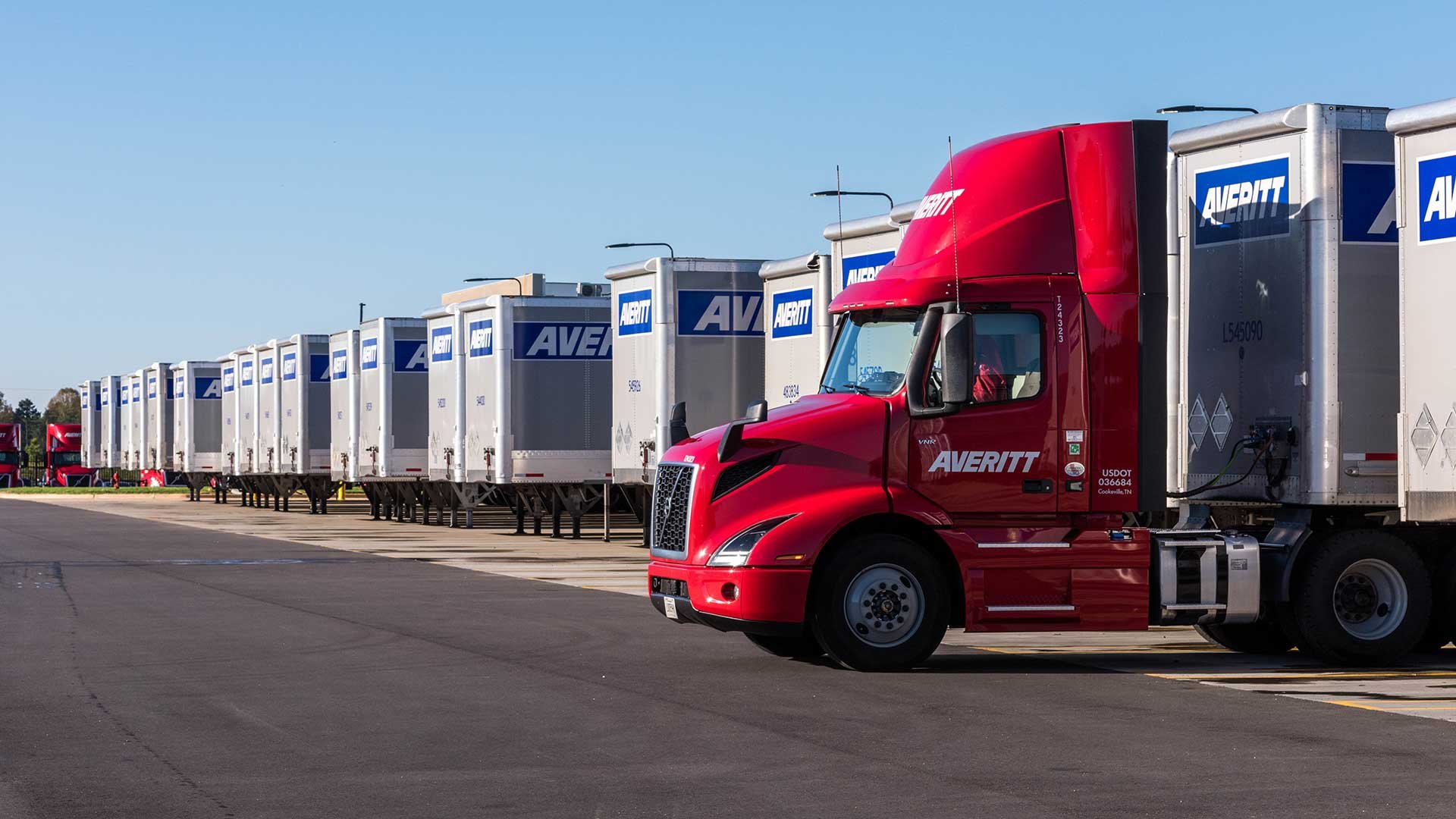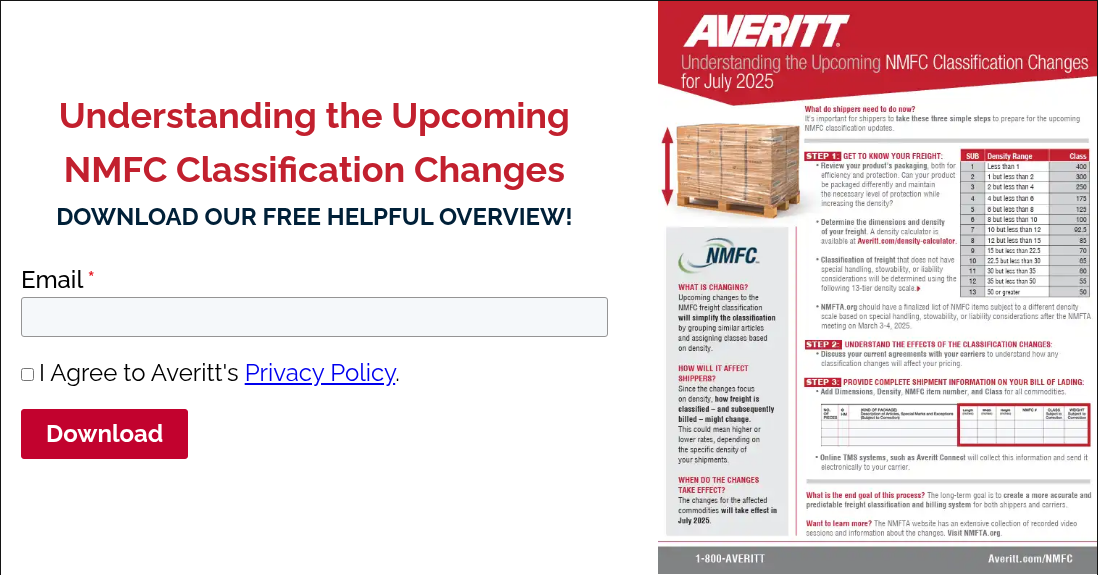2 min read
LTL is Changing: Get Ready for New NMFC Rules Taking Effect July 19
On July 19, 2025, the National Motor Freight Classification (NMFC) system is undergoing its most significant change in...


Since the changes focus on density, the way freight is classified – and subsequently billed – might change. This could mean higher or lower rates, depending on the specific density of your shipments.

The changes for the affected commodities will take effect on July 19th, 2025.

It’s important for shippers to take these three simple steps to prepare for the upcoming NMFC classification updates.
| Sub | Density Range | Class |
| 1 | Less than 1 | 400 |
| 2 | 1 but less than 2 | 300 |
| 3 | 2 but less than 4 | 250 |
| 4 | 4 but less than 6 | 175 |
| 5 | 6 but less than 8 | 125 |
| 6 | 8 but less than 10 | 100 |
| 7 | 10 but less than 12 | 92.5 |
| 8 | 12 but less than 15 | 85 |
| 9 | 15 but less than 22.5 | 70 |
| 10 | 22.5 but less than 30 | 65 |
| 11 | 30 but less than 35 | 60 |
| 12 | 35 but less than 50 | 55 |
| 13 | 50 or greater | 50 |

The long-term goal is to create a more accurate and predictable freight classification and billing system for both shippers and carriers.

For more information and updates, visit the NMFTA.org website, or check out the resources below.
On July 19, 2025, the National Motor Freight Classification (NMFC) system is undergoing its most significant change in...
With the upcoming National Motor Freight Classification (NMFC) LTL classification changes placing even more emphasis on...
In the debut episode of Beyond Point to Point, host Joe Greek is joined by Averitt’s own Mark Davis, Greg Hallmark, and...
Browse recent articles from our transportation industry blog, Point to Point, including timely information about current industry trends and tips for ensuring that your freight gets from origin to destination safely and securely.
Every year, we look forward to sharing a little holiday cheer with our associates, customers, and community. This...
Growth looks different for every business—but for family-owned companies, each new step forward is built on history,...
Throughout this year, the transportation industry has seen heightened federal enforcement focused on driver licensing,...